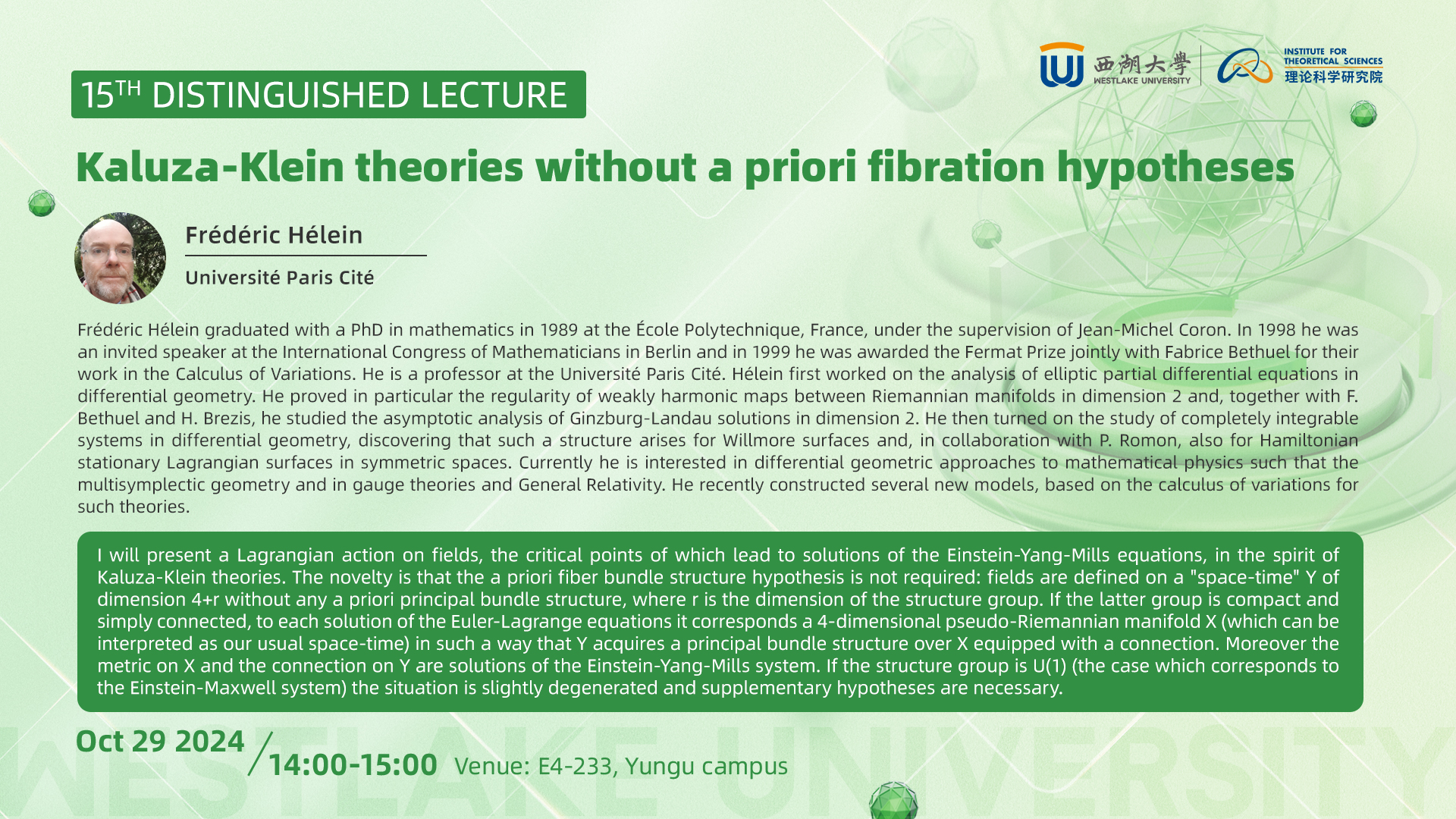Time:14:00-15:00, Tuesday, October 29, 2024
Venue:E4-233
Host: Thierry De Pauw, ITS
Speaker:Frédéric Hélein, Université Paris Cité
Biography: Frédéric Hélein graduated with a PhD in mathematics in 1989 at the École Polytechnique, France, under the supervision of Jean-Michel Coron. In 1998 he was an invited speaker at the International Congress of Mathematicians in Berlin and in 1999 he was awarded the Fermat Prize jointly with Fabrice Bethuel for their work in the Calculus of Variations. He is a professor at the Université Paris Cité. Hélein first worked on the analysis of elliptic partial differential equations in differential geometry. He proved in particular the regularity of weakly harmonic maps between Riemannian manifolds in dimension 2 and, together with F. Bethuel and H. Brezis, he studied the asymptotic analysis of Ginzburg-Landau solutions in dimension 2. He then turned on the study of completely integrable systems in differential geometry, discovering that such a structure arises for Willmore surfaces and, in collaboration with P. Romon, also for Hamiltonian stationary Lagrangian surfaces in symmetric spaces. Currently he is interested in differential geometric approaches to mathematical physics such that the multisymplectic geometry and in gauge theories and General Relativity. He recently constructed several new models, based on the calculus of variations for such theories.
Title:Kaluza-Klein theories without a priori fibration hypotheses
Abstract: I will present a Lagrangian action on fields, the critical points of which lead to solutions of the Einstein-Yang-Mills equations, in the spirit of Kaluza-Klein theories. The novelty is that the a priori fiber bundle structure hypothesis is not required: fields are defined on a "space-time" Y of dimension 4+r without any a priori principal bundle structure, where r is the dimension of the structure group. If the latter group is compact and simply connected, to each solution of the Euler-Lagrange equations it corresponds a 4-dimensional pseudo-Riemannian manifold X (which can be interpreted as our usual space-time) in such a way that Y acquires a principal bundle structure over X equipped with a connection. Moreover the metric on X and the connection on Y are solutions of the Einstein-Yang-Mills system. If the structure group is U(1) (the case which corresponds to the Einstein-Maxwell system) the situation is slightly degenerated and supplementary hypotheses are necessary.
